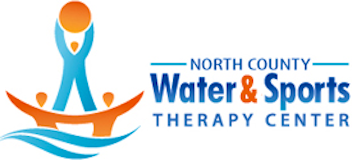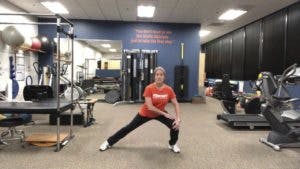Living Well with Stress and Pain: How Mindfulness and Meditation Can Improve Your Health and Well-being
When you think of the word “stress,” how does it make you feel? Like many, you may associate stress with negative feelings and emotions like anxiety, worry, fear or frustration. However, these negative feelings and emotions are actually less a reflection of stress itself, and more a reflection of how we perceive stress. In fact, Hans Selye, the world-renowned Endocrinologist and “Father” of stress research, defined stress as “the non-specific response of the body to any demand for change.” In other words, it’s important to realize that stress itself is neither inherently good nor bad. While we tend to recognize its negative effects, there are also other forms of stress that we generally consider to have a positive impact on health and well-being such as exercise, love, laughter, and excitement. As Selye once said, “It’s not stress that kills us, it is our reaction to it.”
I didn’t understand this concept until fairly recently. When I was in the middle of my doctoral physical therapy program a few years ago, stress had taken on an entirely new meaning for me. I was pushed to my limits with the most external stress I had ever endured before. I was under the obvious pressures of being in graduate school and of becoming a young medical professional, but meanwhile my life outside of school refused to stop. There were also relationship stressors, family stressors, work stressors, and other personal stressors that impacted my daily life. During this time I even developed a cardiac arrhythmia (an abnormal heart beat), which my cardiologist at the time attributed to “high stress and too much caffeine.” Needless to say, after I nearly lost consciousness in the shower once and then again while just sitting in class, this new arrythmia became my wake up call to learn more about stress and how it was negatively affecting my health and well-being.
As I progressed through my physical therapy program, I also began to learn more about pain, the nervous system, the biopsychosocial model, and patient-centered care. Through my studies and experiences, I began to understand that the mind and body truly cannot be separated. I had always thought this to be true, but didn’t realize how much scientific evidence we actually have to back it up. It became clear to me that the relationship between stress, pain, physical and mental health is incredibly strong, and that each can have quite a direct effect on the other. The other very important concept I learned is that humans are adaptable and resilient to stress and pain, especially when equipped with the right tools to reduce their potentially harmful effects. So today, I want to share with you some of those tools that have helped me and many others to live well with stress and pain.
When I look back, there are actually several factors that I believe helped me get through graduate school. Family and social support were very important, as was consistent physical activity and a healthy diet. But the real game changer for me was something else. In my final year of PT school I took an elective course taught by Dr. Pauline Lucas, a physical therapist who practices at the Mayo Clinic, where we learned about yoga, meditation and mindfulness and how these can be implemented into our personal and professional lives as healthcare providers. It wasn’t really until I took this course that I realized that stress, just like pain, is both an inevitable and useful part of the human experience. (If you’re confused by this concept and you’re interested in learning more about pain, click on this link to check out my blog on take home tips for understanding and managing pain.) This concept eventually led me to the idea that in order to make the best out of a stressful situation or painful condition, we need to attempt to change our mindsets about stress and pain. And with this, one of my regular mantras came to be the following:
“When you can’t control what’s happening, challenge yourself to control how you respond to what’s happening. That’s where your power is.” – Unknown
While this sounds great, I will be honest with you… it takes practice. Luckily, mindfulness and meditation are two evidence-based methods that have shown to significantly help with managing our response to stress and pain, especially when performed consistently. The Greater Good Science Center of Berkeley defines mindfulness as the practice of maintaining “moment-by-moment awareness of our thoughts, feelings, bodily sensations, and surrounding environment through a gentle, nurturing lens” and without judgement. This is the opposite of where our brains tend to be in default mode, which largely consists of passive mind wandering. Practicing mindfulness allows us to be more present and less distracted, while sharpening our focus and allowing us to be intentional with how we interpret our environment and the stressors in our lives. Using mindfulness as a tool, we can attempt to change our attitudes about stress and pain. This can be done throughout the day by mindfully breathing, walking, exercising, hand-washing, showering, eating, and much more. By being more mindful, we can take control of our thoughts and redirect our attention toward feelings of gratitude, hope and fulfillment instead of being overwhelmed by constant anxiety, negativity, and worry. The next time you wash your hands, follow the prompts in this video, and then check in with yourself to see how you feel afterward.
Alternatively, meditation is a dedicated practice of focused attention and concentration with the intention to alter the state of consciousness and attain a state of relaxation. This can be done many different ways, but according to Mosby’s Dictionary of Complementary and Alternative Medicine, it typically involves directing one’s attention toward a symbol, sound, thought or breath. Meditation requires patience, non-judgmental attention, and willingness to take time to practice. Perhaps the most common misconception about meditation is that it’s only successful if one’s mind is completely quiet and unbothered by outside thoughts. But, as previously mentioned, it’s actually quite normal to have a wandering mind. Instead, meditation actually involves gently acknowledging any thoughts that may enter your mind, and simply allowing them to pass through just as they entered by redirecting your attention back to the symbol, sound, thought or breath that you chose to focus on during that meditation session. So, when starting a meditation practice it’s important to remind yourself to let go of any expectations, be kind to yourself, and keep practicing because consistency is key.
The scientifically-validated benefits of practicing meditation are endless. It’s been shown to decrease the perception of stress, improve quality of life, enhance focus, and reduce symptoms associated with depression, anxiety, pain, and insomnia. It’s also been associated with supporting smoking cessation, reducing high blood pressure, reducing inflammation, and reducing menopause symptoms, among many others. If you’re new to meditation, there are plenty of resources available that can be helpful in getting started. Smart device applications like the Calm App, Headspace, and Insight Timer provide guided and non-guided meditations for all levels, and these companies also have social media pages and Youtube channels to follow for helpful tips and mindfulness/meditation practices. If you don’t have a smart device, or if you know that you can’t focus when you have a smart device in front of you, another simple way to meditate is by focusing on your breath. Try to practice breathing in slowly through your nose, and out even slower through your mouth. For some, it may help to count in your head in order to stay focused: inhaling for about 4 seconds, pausing for a brief moment, and then exhaling for approximately 8 seconds. This is what I often recommend for patients who come to see me for various painful conditions, and it’s also what I tend to use myself in times when I’m starting to feel the weight of life’s stressors. Not only does this technique distract you from your stress or pain, but with practice it also helps you regain control of your mental, emotional, and physical responses to stress or pain.
After reading this, I hope you now understand how practicing mindfulness and meditation can help put stress into perspective by placing you in the driver’s seat when it comes to your own health and well-being. As Viktor Frankl once stated,
“Between stimulus and response, there is a space. In that space is our power to choose our response. In our response lies our growth and our freedom.”
If you’d like to learn more about changing your mindset about stress, psychologist, researcher, and author Kelly McGonigal gave a wonderful TED talk called “How to make stress your friend” that I would highly recommend watching. If you have any specific questions about managing your own stress and pain, our caring and knowledgeable physical therapists at North County Water and Sports Therapy Center may be able to help. Please feel free to give our office a call to inquire about our services and to schedule an appointment.
Tori Williams, PT, DPT





 herapists and movement experts we can get you moving better and back in the game.
herapists and movement experts we can get you moving better and back in the game.